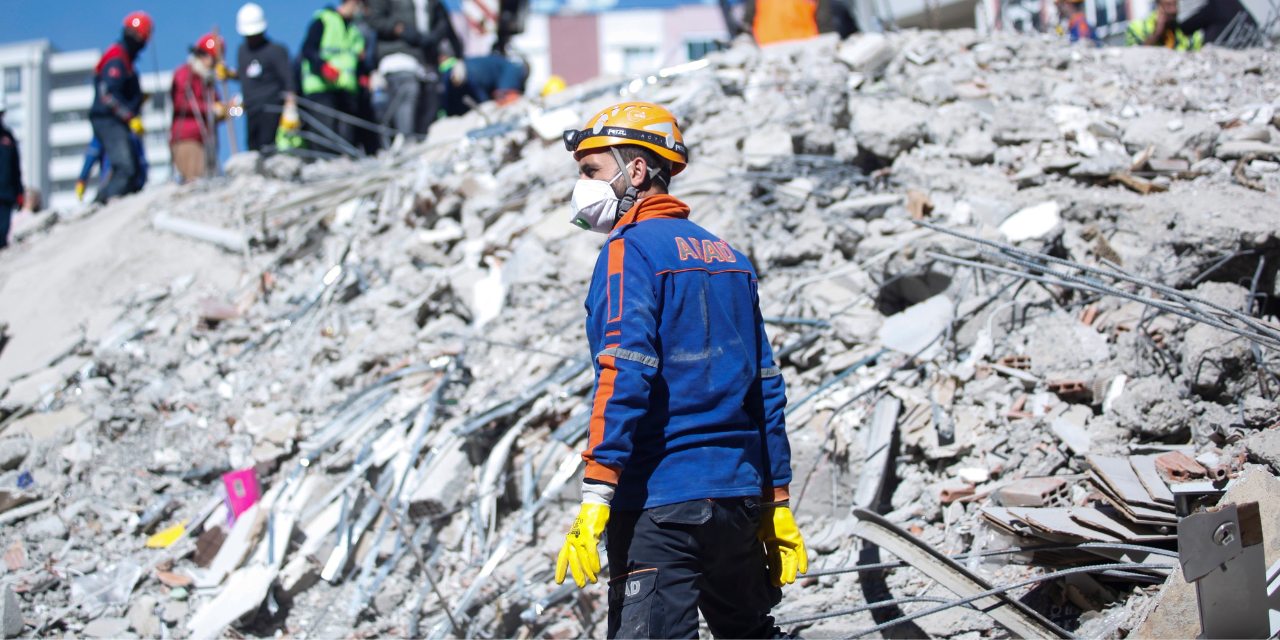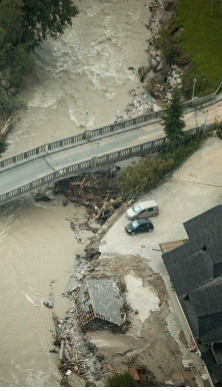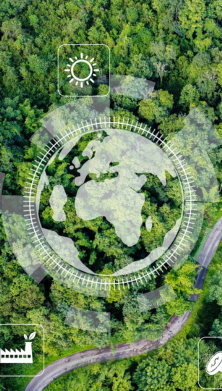This article is part of the ĐÇżŐ´«Ă˝ Risk Barometer 2024
The increasing frequency and severity of extreme weatherĚýevents, ranging from wildfires in Canada to flooding in India,ĚýLibya and Slovenia, and heatwaves in the US, southernĚýEurope, and Asia, have ensured climate change remains aĚýtop fixture on corporate risk registers, particularly amongĚýlarge-size companies (>€500mn annual revenue), where itĚýranks as the fourth top risk overall, its highest-ever position.ĚýIt is also the #1 risk in Brazil and Turkey and a top #3 risk inĚýGreece, Italy, Mexico, and Slovenia.
The risk is threefold: physical, including loss or damageĚýto assets and business interruption; transition-related,Ěýfrom moves towards a more sustainable economy andĚýregulatory and stakeholder pressures; and liability-related,Ěýfrom climate litigation that could lead to reputational andĚýfinancial damage.
Physical risks are the key threat (see chart), with extremeĚýweather events believed to be costing the US economyĚýalone almost $150bn a year [1]. The utility, energy andĚýindustrial sectors are most exposed. In 2023 wildfiresĚýin Canada cut oil and gas output equivalent to 3.7% ofĚýnational production [2], while in manufacturing, waterĚýscarcity is a potential threat to production and supplies ofĚýcritical goods and services.
“Although this year’s ĐÇżŐ´«Ă˝ Risk Barometer results onĚýclimate change show that reputational, reporting and legal risks are regarded as lesser threats by businesses [rankingĚýoutside the top four concerns, see chart], many of theseĚýchallenges are interlinked and we expect climate-relatedĚýtransition and liability risks to increase as companies investĚýin higher-risk, lower-carbon technologies, where bankabilityĚýand insurability are a challenge,” says Denise De Bilio, ESGĚýDirector, Risk Consulting, ĐÇżŐ´«Ă˝ Commercial. “BusinessĚýwill also face higher risk of greenwashing claims fromĚýstakeholder scrutiny.”
ĐÇżŐ´«Ă˝ Risk Barometer 2024
Climate change:Ěý →ĚýRank 7 (18%)
- 2023: 7 (17%)Ěý Ěý
- 2022: 6 (17%)Ěý Ěý
- 2021: 9 (13%)Ěý Ěý
- 2020: 7 (17%)Ěý Ěý
- 2019: 8 (13%)ĚýĚý
Ěý
- Brazil
- Turkey
On a more positive note, the ĐÇżŐ´«Ă˝ Risk BarometerĚýfindings indicate businesses are focusing on net-zeroĚýcommitments while building operational and financialĚýresilience by climate-proofing their assets (see chart).
Gabrielle Durisch, Global Head of Sustainability SolutionsĚýat ĐÇżŐ´«Ă˝ Commercial, says:Ěý“We see companies shiftingĚýto low-carbon business models, improving planning andĚýresponse to climate events, and implementing physicalĚýmeasures to boost resilience. Some industries underĚýregulatory scrutiny might focus on adapting to low-carbonĚýbusiness models and invest in clean technologies, whileĚýothers might concentrate on mitigating physical loss orĚýdamage to assets and minimize supply-chain disruptions.”
Durisch adds:Ěý“Our research shows businesses are alsoĚýseeking protection and financing mechanisms to addressĚýthe growing climate insurance protection gap.”
Supply chain resilience is expected to become a keyĚýfocus in 2024 as companies consider the impacts ofĚýclimate events on production and work closely withĚýsuppliers to identify climate risks, and share sustainabilityĚýcommitments and contingency plans, such as siteĚýrelocations or sourcing alternatives, De Bilio notes:Ěý“WeĚýknow that socioeconomic factors, such as increasingĚýurbanization in areas exposed to climate change, are aĚýdriver of nat cat insurance losses. With extreme weatherĚýevents the new normal, companies need to invest inĚýshoring up their supply chains. They need to focus onĚýresilience such as flood protection and reinforcingĚýinfrastructure to reduce the vulnerability of assets, lowerĚýthe risk of disruption, and increase insurability.”
Which impacts of climate change does your company / industry fear the most?
Which actions is your company taking to mitigate the direct impact of climate change?
References
[1]ĚýUS Government, The Fifth National Climate Assessment, November 2023
[2]ĚýReuters, Some Canadian oil and gas producers re-curtail output as wildfires persist, May 17, 2023
Picture: Adobe Stock















